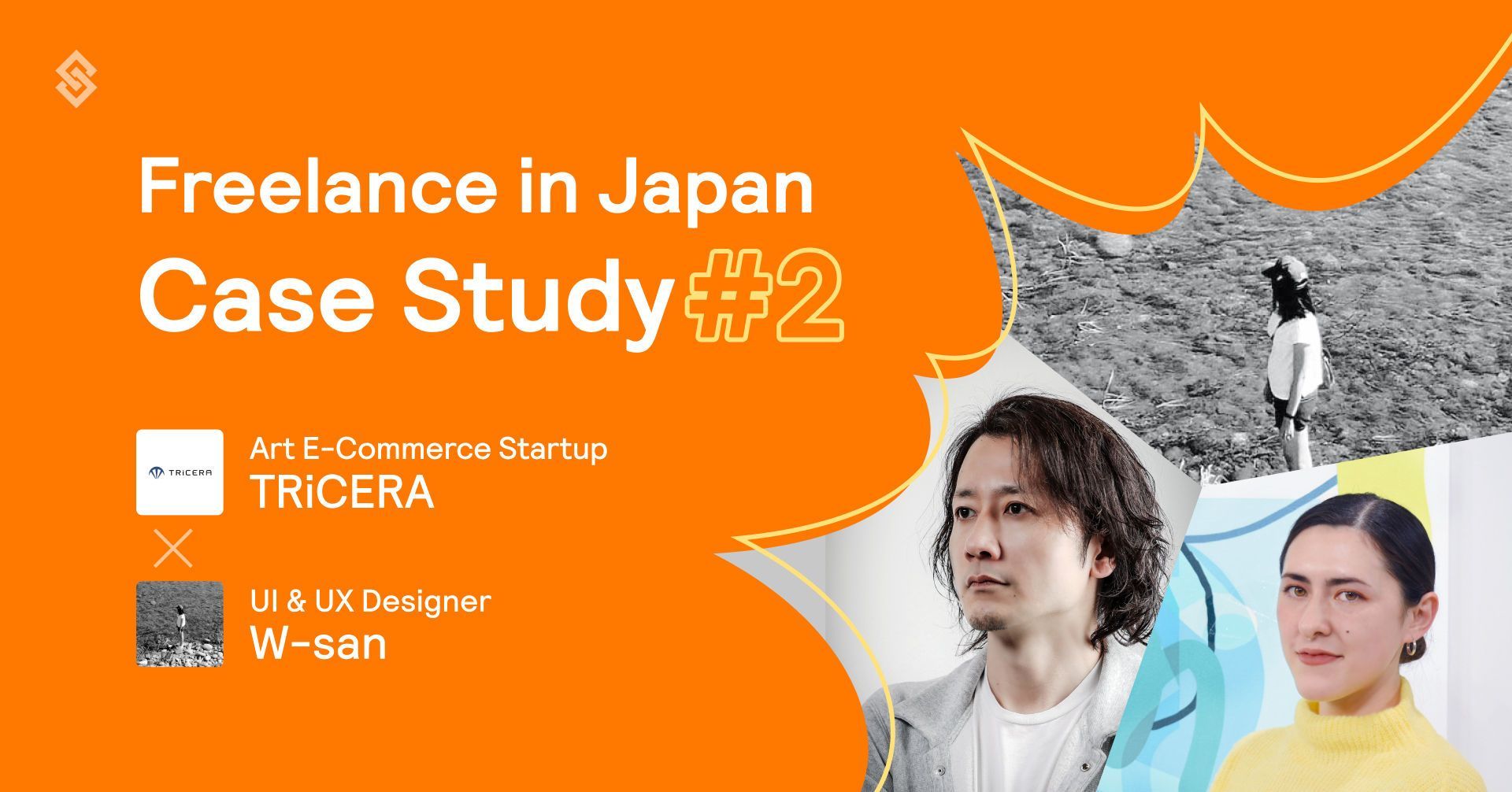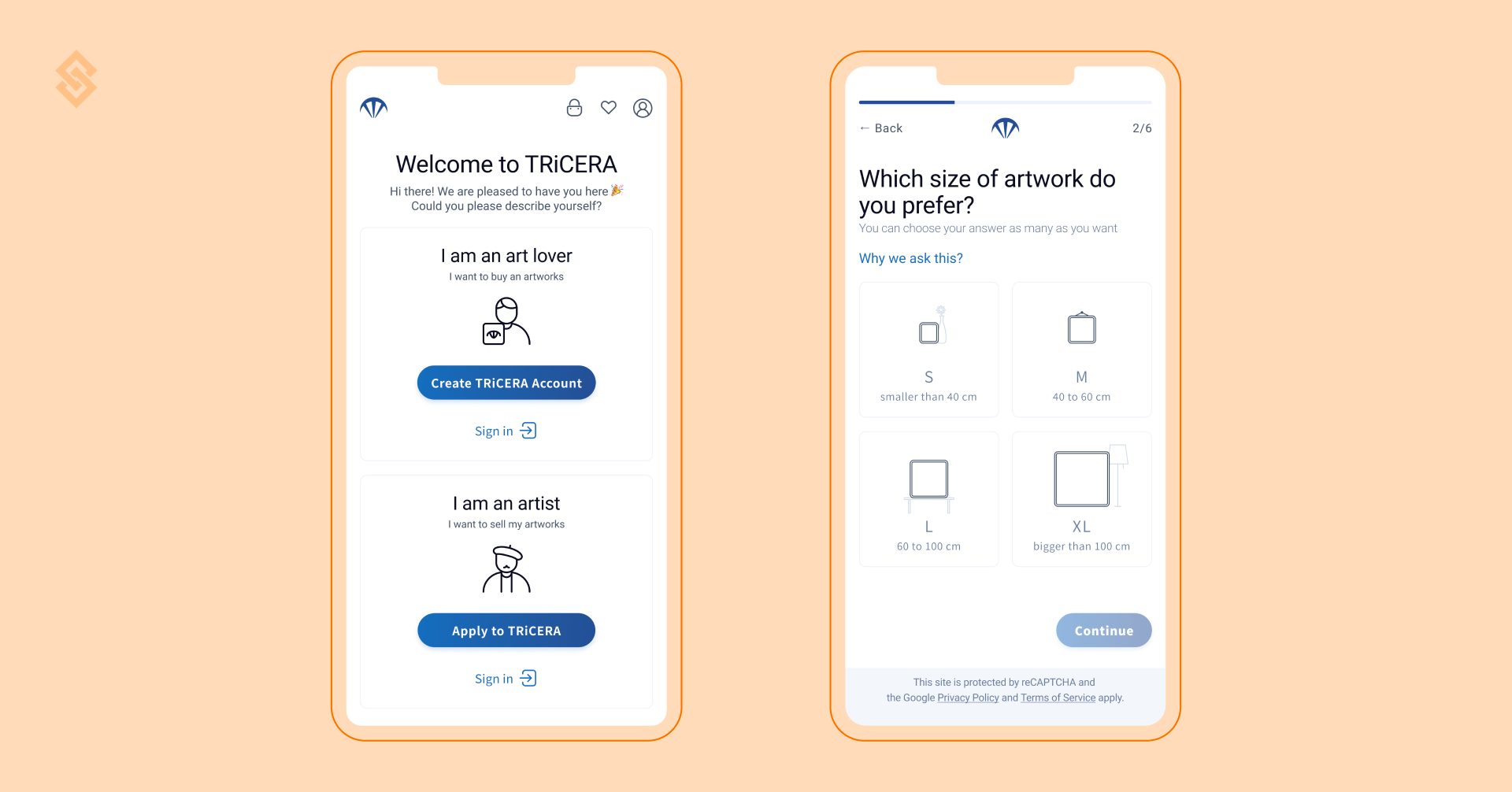
Freelance in Japan Case Study #2: Changing Industries as a Freelance Designer
* This post is translated from its original Japanese Version into English.
What happens when an organization stuck in the full-timer cycle meets a freelance designer looking to make an industry change?
Let’s examine the case of Art E-Commerce startup TRiCERA and UI/UX designer who we’ll call “W-san”.
W-san joined TRiCERA's team as a designer on their E-Commerce site registration flow improvement project. The project began in February 2023, and quickly the team dynamic felt like a great fit. After this initial project wrapped up, both W-san and TRiCERA decided to continue working together for a follow-on project to improve the site’s purchase flow.
How did this collaboration come to be, and how did everyone end up benefiting?
This time, we’re interviewing Daisuke Inoue, who serves as the Product Director at TRiCERA, Megumi Ishimura, the HR & Operations Manager at TRiCERA, and freelance designer W-san for background.
Introducing Freelancing to a Full-Time-Only Organization
— What challenges and needs did each party have before this collaboration was realized?
Inoue: So actually, last year at TRiCERA, we made it a point to conduct our business with only full-time employees. During this time, we saw first-hand a lot of pros and cons of this talent approach.
The good part is that it enhances a sense of shared responsibility among our team. However, no matter how a full-time employee’s work-load, their salary remains the same. Eventually, there was a feeling of "I’ve done enough" that took hold in our office. I was concerned that we would stop innovating – becoming a stale workplace, by developing products with only full-time employees.
Now on the other hand, freelancers receive real rewards for exercising their skills, and that’s what TRiCERA needed. So we shifted towards hiring freelancers to seek speed and results.
What we wanted in the team was a UI/UX designer who could consider the development side of work. Until then, engineers and designers had disparate thinking within the company, and both realms were not well connected. Therefore, we needed someone who could link them well.
W: When I first spoke to TRiCERA, I had been working on the same project as a full-time employee in a fintech company and was thinking about trying something else. I had been involved in various projects at the advertising agency I worked for previously, and that broadened my perspective and I enjoyed the variation.
Fintech products also prioritize information, with a lot of rules that we need to follow [as a designer]. While I find the experience educational, still I wanted to expand my design work [to projects] that requires a more aesthetic-based skillset that would take advantage of my background as an art college graduate.
— What was the process of getting the project started?
Ishimura: Upon hearing Inoue's needs, I consulted with Sollective's organizational consultant. They understood TRiCERA's challenges and said they had the perfect person: W-san.
To be 100% honest, I feel that with recruitment agents, you often get candidates who are "not quite right." But Sollective thoroughly vets and screens their freelancers' work styles and backgrounds, so they understand the candidates really well. That's probably what sets them apart from other companies.
W: We did two interviews together before the project kicked off. It was easy to communicate from the start. I'm freelancing on the side, so to use my time efficiently, I wanted to avoid places where communication would take a long time but the interview with TRiCERA was very smooth.
A Symbiotic Relationship: Fresh ideas & Up-Skilling
— How’s the project going?
W: It was incredibly fun! The art and e-commerce matches my interests, and above all, the pace is fast. In my primary job, it takes 3 to 6 months from briefing new features to QA, whereas at TRiCERA, it's just one month. There are also fewer rules, making new proposals easier. Working this way is refreshing.
I was initially worried about how the other members would treat me since I'm not a full-time employee. I was also concerned about my limited involvement time compared to others working either hours a day. But once I joined, I saw that everyone had different working hours, and it wasn't a problem at all.
Communication is smooth, just like the initial interviews. I talk to Inoue-san every day, and I can ask anything comfortably. I can ask questions right away if I don't understand something.
Ishimura: It's great that Sollective continues to check in with freelancers and companies even after the project starts. Even though we're doing regular one-on-one meetings, there might be things that are hard to say directly.
Inoue: From my perspective, W-san joining was exactly what I wanted, and I'm delighted. Their participation has brought a breath of fresh air to the organization, stimulating the existing engineer and designer team members, and W-san meshes with TRiCERA's culture. It’s a nice symbiotic relationship.
What stands out the most is that W-san's understanding of web engineering while designing UI has greatly reduced not only development costs but communication costs. Engineers can start implementing right away, saving time and effort in questioning and explaining designs. That's a huge benefit.
W: I'm delighted to hear that. Design only comes to life during implementation, so making it easy for engineers is critical. Maybe this way of thinking came naturally because my main job is in tech.
Also, having access to data at TRiCERA is significant. Design discussions often become subjective, but if you have numbers, you have a criteria for making decisions. Although everyone understands the importance of data, not many companies practice it. So being able to design based on abundant data at TRiCERA is a valuable experience.

Screen designed by W-san
A Long Term Collaboration Instead of a One-off Project
— Lastly: are there any learnings or practices you gained through this project?
Inoue: Through this collaboration, we've decided to focus on freelancers for at least the next six months. Not just startups like us, but any company in Japan that wants to iterate and build quickly, should try what we did [with freelance].
I believe this is true even for large companies. Even if a company wants to proceed with a new project, starting from finding a vendor slows things down. But if you hire freelancers, you can assign specialized personnel on the spot for a year and quickly validate hypotheses. Large companies may be particularly likely to benefit from hiring freelancers.
W: Through the work with TRiCERA, I now want to be a leader like Inoue-san in the future. Not only can I enjoy my work while utilizing my sense and skills, but I have also found a role model as a leader.
We work together so well probably because we have a really high compatibility with each other. Therefore, it's better to do a compatibility check via interviews.
Ishimura: I'm glad we worked with Sollective this time. Hiring is time-consuming and expensive for companies, but Sollective was there with us and was very helpful.
💡Related article: